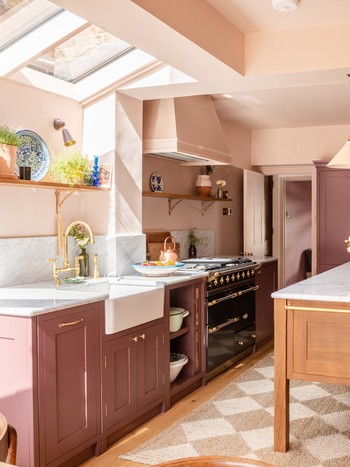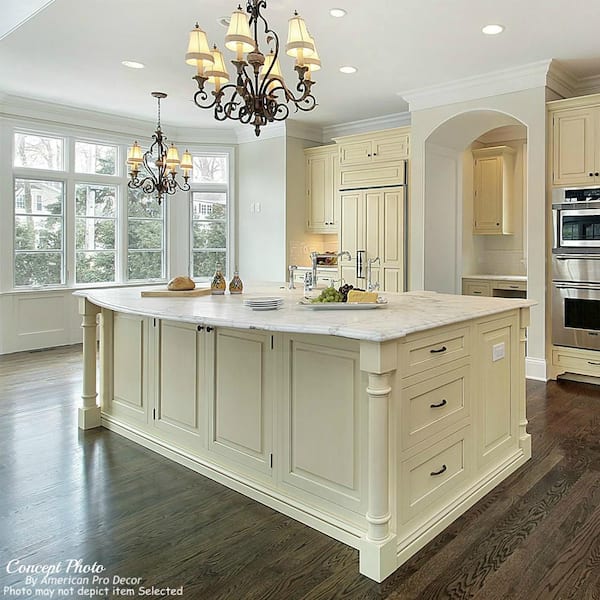Vital Elements to Consider When Picking Legs For Kitchen Area Island
Selecting the appropriate legs for a kitchen area island includes a careful assessment of several aspects that can significantly influence both functionality and visual allure. Among these, the option of material plays a pivotal function in guaranteeing toughness, while the design must match the existing decoration. Considerations such as elevation and weight support are crucial for stability and comfort. As we discover these elements, it comes to be clear that each choice can have far-ranging effects for the general kitchen experience. What nuances should be taken into consideration in each of these classifications to accomplish the ideal balance?
Material Options
When picking legs for a kitchen area island, recognizing the various product choices is essential for accomplishing both aesthetic allure and architectural stability (Legs For Kitchen Island). The selection of product considerably affects not just the resilience of the island yet additionally its general style and capability
Wood is a popular choice, providing heat and versatility. Strong hardwoods, such as oak or maple, offer stamina and can be tarnished or repainted to match the kitchen style. Steel legs, commonly made from stainless-steel or wrought iron, contribute a modern-day and industrial feeling while making certain resilience and security. These products are resistant to put on and can sustain considerable weight, making them perfect for larger islands.
One more option is engineered materials, like MDF or plywood, which can be more affordable while still offering a series of finishes. They might not provide the exact same degree of security as strong timber or steel. Legs For Kitchen Island. Last but not least, products such as acrylic or glass can develop a modern look, though they may require added assistance to ensure security.
Inevitably, the selection of material for cooking area island legs must straighten with the wanted capability and the total theme of the kitchen.
Design And Style

When thinking about style, the form and finish of the legs are important. Conical legs can provide a feeling of agility and sophistication, while thicker, extra durable legs can communicate toughness and security. Furthermore, the coating-- be it painted, discolored, or natural-- ought to match the cabinetry and kitchen counter products to produce a unified appearance.
In addition, the layout of the legs can also reflect individual taste. Custom or decorative legs, such as those including intricate carvings or unique geometric shapes, can work as focal points, including personality and personality to the kitchen. Eventually, the best selection will not only boost capability yet additionally elevate the aesthetic allure, making the cooking area island a standout feature of the home.
Height Factors To Consider
Picking the appropriate elevation for kitchen island legs is critical, as it straight impacts both performance and comfort. The typical elevation for a cooking area island commonly varies from 36 to 42 inches, straightening with typical kitchen counter heights. A 36-inch height is excellent for food preparation and cooking, permitting for comfy use kitchen area devices and devices. Conversely, a height of 42 inches is commonly preferred for islands intended for bar seating, fitting taller feceses and providing a casual eating experience.

It is also important to represent customers' choices and heights. Customizing the height can ensure a comfy experience for all household members, making the kitchen island an extra practical and delightful area.
Weight Assistance
Guaranteeing ample weight assistance for kitchen area island legs is important for both safety and security and functionality. The kitchen island commonly serves several objectives, consisting of cooking, dining, and additional storage space, necessitating a robust support framework. When picking legs, it is critical to consider the total weight capacity called for based on the island's intended use and the materials that will be put on it.
The selection of material for the legs plays a considerable function in their weight-bearing capabilities. Solid timber, metal, and heavy-duty composites typically offer remarkable strength contrasted to lighter products. Furthermore, the design of the legs-- whether they are right, tapered, or have a pedestal type-- can influence their ability to disperse weight efficiently throughout the framework.
Furthermore, the leg placement must be purposefully intended to enhance security. Legs positioned at the corners or with a larger base can better sustain heavier lots. Constantly consult the maker's specifications concerning load limits to make certain that the legs can sustain the intended weight without compromising safety. In summary, selecting kitchen area island legs with ample weight support is vital for developing a practical and secure cooking area.
Setup and Maintenance
Appropriate installment and upkeep of kitchen area island legs are vital for making certain longevity and security. To start, it is vital to comply with the producer's standards throughout installment. This commonly includes protecting the legs to the space station using suitable bolts, guaranteeing that the legs are degree and lined up. Making use of a level device view website can help protect against wobbling and boost the overall visual charm of the cooking area island.
Once mounted, normal upkeep is required to preserve the integrity and look of the legs - Legs For Kitchen Island. For wood legs, regular cleansing with a damp towel and application of suitable wood polish can stop dampness damages and preserve their finish. Metal legs might need a gentle cleaning service to get rid of oil and crud, complied with by a completely dry towel to avoid rust formation
In addition, check the legs visit this website frequently for indications of wear or damages, such as fractures or loose joints. Tightening screws or bolts as required can additionally extend the life-span of the legs. By adhering to these setup and upkeep techniques, homeowners can make certain that their kitchen island remains durable and aesthetically appealing for many years to find.
Conclusion

Aesthetic coherence is paramount in picking the design and style of discover this legs for a cooking area island, as these components considerably influence the overall atmosphere of the room. Tapered legs can provide a sense of agility and elegance, while thicker, more durable legs can share toughness and stability.Selecting the ideal height for cooking area island legs is critical, as it straight impacts both functionality and comfort. In recap, choosing kitchen area island legs with appropriate weight assistance is crucial for developing a practical and safe culinary space.
In conclusion, choosing legs for a cooking area island requires careful consideration of different elements, consisting of product choices, style, elevation, weight assistance, and setup.